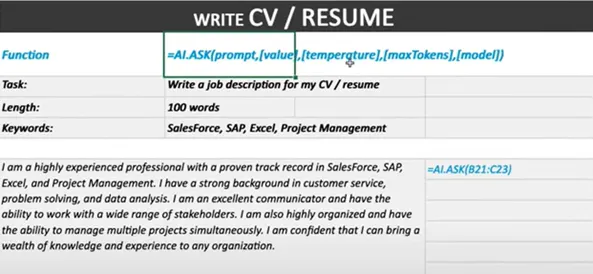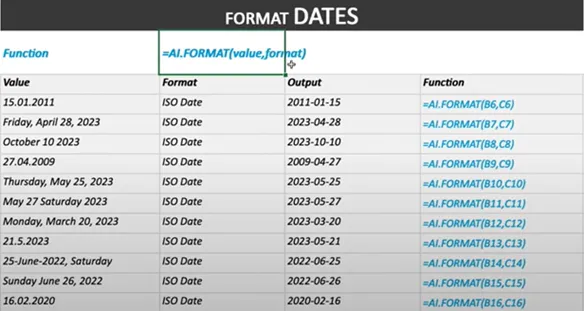
Intelligent use of tech: ChatGPT's Excel Plug-In
At Quantik, we hold biweekly forums titled 'Intelligent Use of Technology' where the objective is simple: how can we improve our productivity and performance through the intelligent use of technology. Each team member takes an application or an issue, tests it, and feeds back to the group, with the idea that we make incremental improvements by learning from each other.
In this next mini-series, we wanted to share some of our learning, so this is the focus of our next mini-series which kicks-off with a ChatGPT bang. I don’t quite know when it happened, but one day a few months ago, a little plug-in appeared when I opened Excel in a new AI section of my Home ribbon that said 'ChatGPT for excel' under the ChatGPT logo.
I was intrigued and asked Nathan Bilton to trial its use and feedback about what the plug-in is, whether it was useful for use in his day-to-day duties as a senior quantity surveyor, and what limitations there are.
Here are some of the things Nathan learnt.
ChatGPT
I found ChatGPT to be very helpful in finding formulas or writing macros.
When I wanted to achieve a task and was not sure if a formula existed, or needed support writing a long formula, I ask ChatGPT, and by describing what I would like to achieve, it either provides the answer or gives me enough of the answer for me to finish it. This has been a lot more effective than searching through Google, forums, or YouTube and provides instant results saving me time and potentially wasted effort.
However, it is not helpful in all situations. There are situations where I have asked the question and ChatGPT just didn’t understand what I was trying to achieve. The AI could not see the spreadsheet, and my question may not have been 100% perfect, so we struggled to reach the right answer.
The caution I would give here is that you need to have a level of Excel proficiency before using ChatGPT's advice. It can only guide you as to what the solution is and it cannot do it for you. You need to test where the formula / macro has achieved your desired outcome because if there has been an interpretation error, this will pollute the quality of your work.
Understanding how ChatGPT works, the parameters you can set, and how best to word your questions will have a bearing on your outcomes.
The Basics
The plug-in for Excel is free to use, up to a set limit, and beyond that limit, there are associated OpenAI API fees, but these are relatively modest and vary based on usage. The model used is GPT 3.5 turbo 0125 which is not the secure version, but can be upgraded at cost.
From a privacy perspective, OpenAI’s data privacy policy states that it does not train its models on any user data submitted through its API (“Artificial Intelligence Application Programming Interface”). However, I would recommend always taking care when sharing data with ChatGPT and taking appropriate measures to protect data while intelligently sharing information.
For further information, check out: https://appsource.microsoft.com/en-us/product/office/wa200005271?tab=overview
The Trial
The initial concern I had was the security and sensitivity of the information, so I conducted my trial with dummy data. At the end of the trial, my overwhelming feeling was that it was currently a limited plug-in, especially for quantity surveyors.
One of its main uses was searching for information within data sets, which either I could do anyway or, if related to publicly available information, I would ask ChatGPT the question anyway.
The plug-in introduces some new formula possibilities which I found intriguing:
AI.ASK allowed me to ask questions about the data, and the AI would write engaging content.
AI-TABLE created AI-powered tables in seconds.
AI.TRANSLATE translated my data into dozens of different languages.
AI.FORMAT quickly formatted my data for consistency.
AI.FILL cleaned my data and filled in missing ranges.
AI.LIST generated list outputs in separate rows.
As a couple of examples, AI.ASK can take information about an employee and create a CV with some basic information from an Excel spreadsheet.

or AI.FORMAT can align the date format of data where this is inconsistent.

Final reflections
Although I don’t think these formulas would immediately improve my productivity or performance, I can definitely see the potential.
The way we interact with data could be completely transformed in the coming years, but we are not yet at that tipping point. On reflection, my thoughts return to the issue of quantity surveyors improving the way they use data which is essential for users of AI.
One area of improvement that I would like to see is the ability to pull information from multiple sources with AI knowing why it is performing that task for me. For example, could it pull costs from a ledger from the month and input them directly into a CVR-type document to save time and remove the risk of human error?
This could potentially be possible if the AI model was taught, and the application of such uses would save time on the manual inputting of data and allow more time for risk management, procurement, and the daily tasks we find ourselves occasionally pulled away from, especially at monthly report times.
In next week’s article, we focus on a proofreading tool that we have tested and share our thoughts on its use, the value-for-money considerations and the limitations of the tool.
Keep an eye out for that and, in the meantime, enjoy the rest of your week!
Bringing The science of Quantik® to you
p.s. If anything in this article, or any of our articles, resonates with a challenge you are experiencing, check out our Bringing The science of Quantik® to you initiative where we offer a tailor-made session aimed at helping you tackle your project or business challenge (link below).
Form: https://form.jotform.com/241425931072350
Back to articles
THE SCIENCE OF QUANTIK™
Publications
We publish insights through our LinkedIn newsletter, titled “The science of Quantik”, which are light bites of information covering news and insights relating to the construction industry and quantity surveying.
LinkedIn